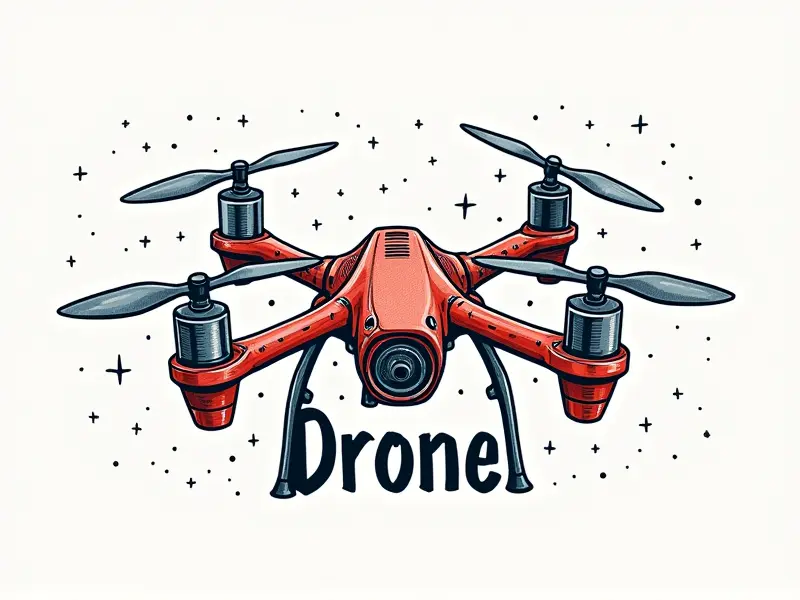How do drones stay in the air?

Secrets of Drone Flight Stability
Drones, also known as unmanned aerial vehicles (UAVs), are marvels of modern technology that have revolutionized various industries. To understand how drones stay aloft, one must delve into the intricate balance of aerodynamics and propulsion systems that govern their flight stability.
Aerodynamics Explained: Why Drones Fly
The principles of aerodynamics play a crucial role in enabling drones to achieve sustained flight. Key factors include lift, drag, thrust, and weight. Lift is generated by the drone's rotors pushing air downward, creating an upward force that counteracts gravity.
Understanding Propulsion in RC Drones
The propulsion system of a remote-controlled (RC) drone typically consists of multiple electric motors paired with propellers. These motors generate thrust, which is essential for both takeoff and maneuvering during flight. The efficiency of the propulsion system directly impacts the overall performance and stability of the drone.
Balancing Forces for Optimal Drone Flight
For a drone to maintain steady flight, it must balance several forces acting upon it. These include lift from the propellers, weight due to its mass, drag caused by air resistance, and thrust generated by the motors. The precise control of these forces is achieved through sophisticated onboard electronics and software.
Key Factors for Maintaining Altitude in Drones
Maintaining a consistent altitude is critical for effective drone operation. This is accomplished through an array of sensors such as barometers, GPS modules, and accelerometers that continuously monitor the drone's position relative to the ground and adjust thrust accordingly.
Lift and Thrust: Key to Drone Flight
The interplay between lift and thrust is fundamental to a drone’s ability to remain airborne. Lift is created by the rapid rotation of propellers, which forces air downward, while thrust is provided by the motors pushing against this airflow. The balance between these two forces determines whether the drone ascends, descends, or hovers.
The Physics Behind Drone Airborne Capability
Understanding the physics involved in drone flight requires knowledge of Newton's laws of motion and principles like Bernoulli’s equation for fluid dynamics. These concepts explain how drones can achieve lift and maintain stability despite varying environmental conditions.
FPV Racing Drones: Soaring Through Air
FIRST PERSON VIEW (FPV) racing drones are designed to deliver high-speed performance with agile maneuverability. Their compact design minimizes air resistance while maximizing thrust-to-weight ratio, allowing them to reach impressive speeds and execute sharp turns effortlessly.
Why RC Helicopters Stay Afloat in Wind
RC helicopters employ a different set of aerodynamic principles compared to quadcopters or fixed-wing aircraft. They rely on tail rotors for yaw control and cyclic pitch changes for roll and pitch maneuvers, enabling them to maintain stability even in windy conditions.
Aerodynamics of RC Quadcopters Explained
Quadcopters are among the most popular types of RC drones due to their simplicity and robustness. Each rotor contributes equally to lift and thrust, allowing for precise control over pitch, roll, and yaw movements. The aerodynamic design ensures efficient air flow around the rotors.
Mastery of Altitude Control with Drones
Mastering altitude control is essential for drone pilots aiming to optimize performance in various applications such as aerial photography or surveying terrain. This involves fine-tuning settings like PID (Proportional-Integral-Derivative) controllers and understanding how different environmental factors affect the drone's stability.
Conclusion
In summary, drones achieve flight through a complex interplay of aerodynamic principles, advanced propulsion systems, and sophisticated control mechanisms. By balancing forces such as lift, thrust, drag, and weight, drones can maintain stable flight even in challenging conditions. Whether it’s an FPV racing drone zipping past obstacles at breakneck speed or an RC helicopter hovering steadily against gusty winds, the underlying physics remains constant: mastery over these principles is key to unlocking the full potential of unmanned aerial vehicles.

